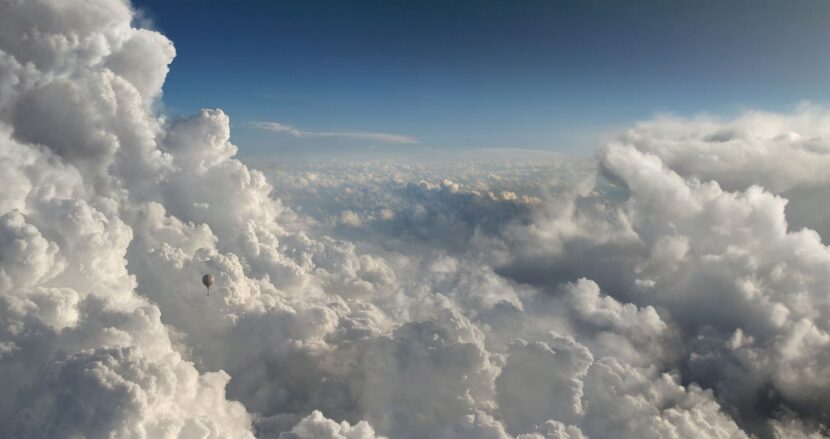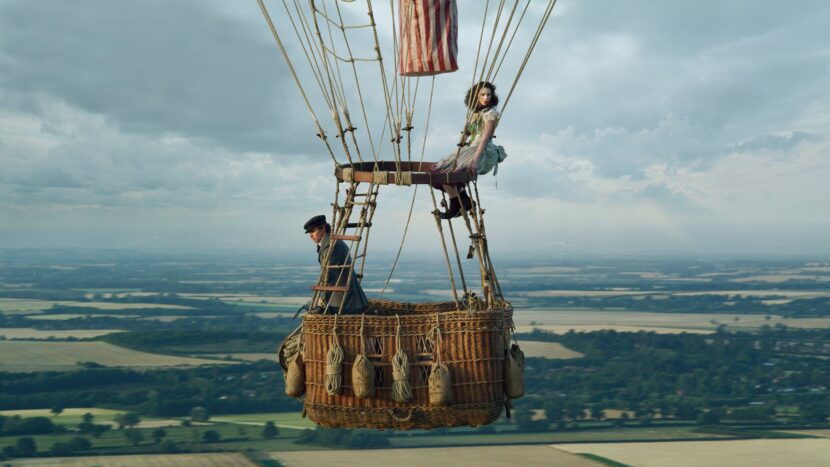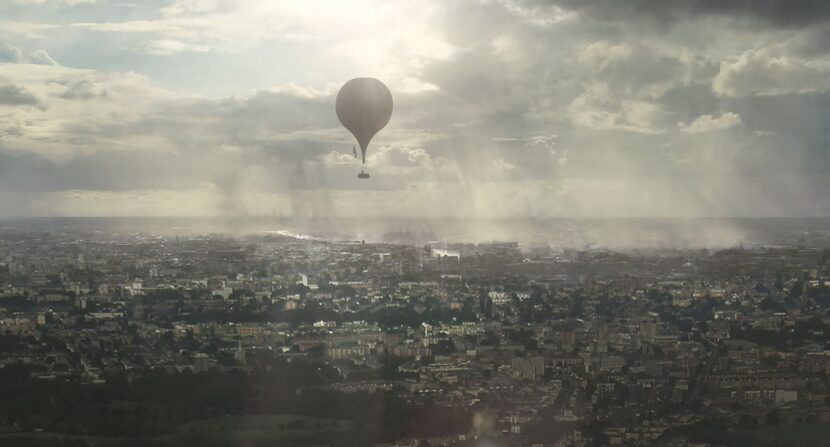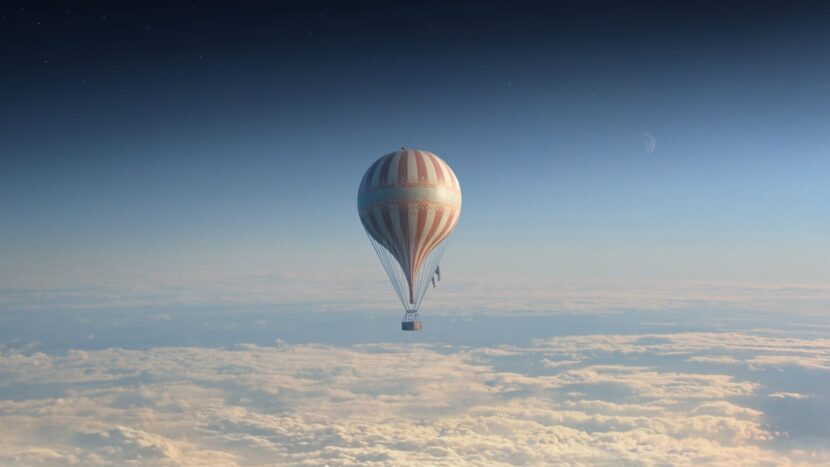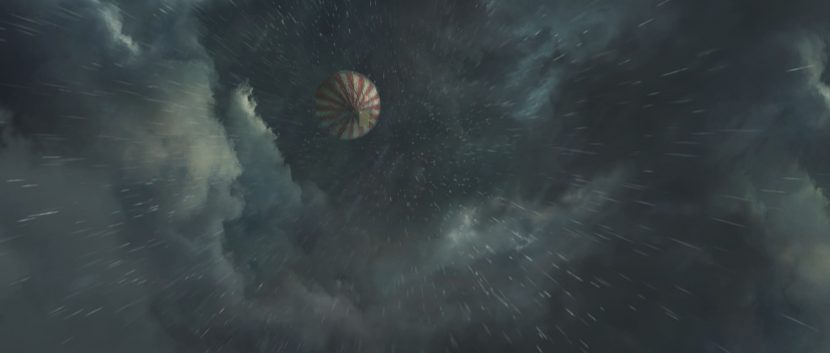The Aeronauts is a semi-factual adventure that follows pilot Amelia Wren (Felicity Jones) and scientist James Glaisher (Eddie Redmayne) who find themselves in an epic fight for survival as they attempt to reach record altitudes. Amelia Wren is actually a fictional character, based on two real-world female balloonists, Sophie Blanchard, the first woman to work as a professional balloonist, and Margaret Graham, a British aeronaut and entertainer. The film’s plot is based on an amalgam of the flights but most significantly a balloon flight in September 1862. In this flight, the coal gas-filled balloon, flown by two British aeronauts James Glaisher and Henry Coxwell, broke the world flight altitude record, reaching about 11,887 m (38,999 ft). To put that height into perspective, Mt Everest is only 8,848 m (29,029 ft). While the story is an amalgam, director Tom Harper was keen to not only have the film appear visually realistic but to play out the journey in real-time. In the film, as in real life, the whole trip took under 2 hours. To this end, the film splits its time between the journey of The Aeronauts and flashbacks to their back story.
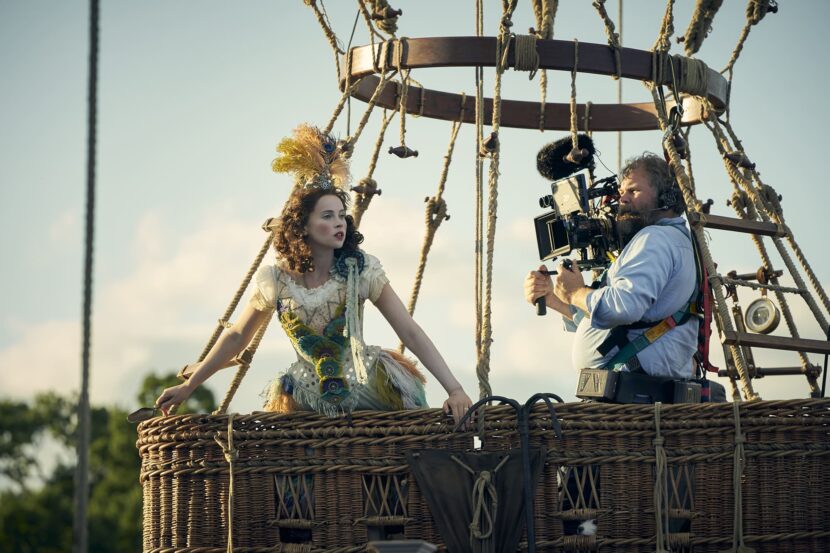
George Steel on set
George Steel was the cinematographer and a long-time collaborator with Harper, shooting Wild Rose, the War & Peace miniseries, and Peaky Blinders together.
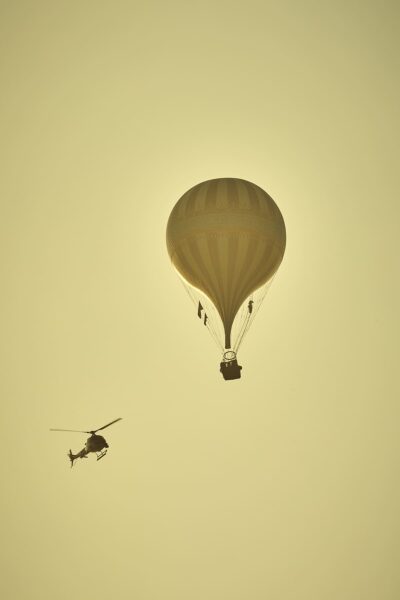
Eddie Redmayne and Felicity Jones actually flew in the hot air balloon seen within the film to roughly 2,438 m (8,000 ft), but most of the action could not be filmed fully live-action. Clearly, the production couldn’t send Jones and Redmayne up in a 19th-century balloon to 11,887 m+, and even if they could, there would be no way to properly film it. Even so, Louis Morin, the primary VFX Supervisor, was determined to film as much in-camera as he could. Morin’s previous credits include Arrival and Beauty and the Beast.
Framestore was tasked to deliver the majority of the VFX environments for film, they worked with Morin and the director to balance live-action elements both of the actors and cloud banks, with CG effects and computer-generated volumetric clouds. Rodeo FX handled VFX for the end of the film, the last part of the descent.
With the weather and the study of it central to the storyline, it was, therefore, a key challenge for Framestore to produce amazing cloudscapes that were unprecedented in terms of volume, precision, and art direction. The work began with Framestore’s in-house art department providing concept art for atmospheric cloudbanks to Harper. VFX Supervisor Christian Kaestner explains, “It had to be realistic, but it also required a subtle hint of the fantastic. It had to tell the story of this dangerous endeavor with beautiful imagery and believable cinematography.”
The production shot plates with 6 Red Monstro Cameras in an array to produce 8K plates that could be stitched together to provide a powerful and vast background in every direction. As the film was delivered in 4K the 8K plates allowed the camera to focus in to a 50mm lens and still not actually blow up the background plate. This generated a lot of background plate footage. “We managed to just keep the project under a petabyte,” jokes Kaestner.
Clouds in all their forms surround the pair throughout the film – high up and close up, in thunderstorms and sunny weather, which proved to be a creative, technical and at times philosophical feat. “We’ve all been looking at clouds our whole lives and have become accustomed to how intangible and ephemeral they are, ” says Kaestner. “But that poses a strange challenge when they form so much of the film’s environment – you instinctively know what looks real and what doesn’t when it comes to shape, pattern, movement and how the light travels through them. This meant we had to spend a lot of time working on believability.” In doing so the team turned to theory, consulting a climatologist from McGill University. “In one sequence, we’re in a huge field of clouds that spreads over 30km,” explains CG Supervisor Ben Magana. “The very vastness of it meant there was nowhere to hide, and we were running some incredibly detailed simulations to generate random, organic cloud shapes and ensure the scattering and density of the light looked believable and natural.”
The special effects team suspended the Balloon’s basket in a way that it could move realistically. “We also had most of the ropes, which were all measured out with the correct angles to how they would be if they were on the real balloon,” Kaestner explains. “There was also a suspension ring that would allow the basket to swing, rock and bounce in the correct way.” While much of the atmosphere was added in post, the actors were sprayed with various jets, mist, and steam during principal photography. “The rest of the snow, ice crystals, et cetera we added on top, which really helped give a sense of the balloon traveling,” he adds.
The balloon’s almost 11,887m ascent also required a micro approach to VFX artistry, with Framestore’s effects department filling the sky with floating ice crystals. It was important to Harper for the audience to have a sense of the direction in which the balloon was traveling. Snowflakes and tiny ice particles became a great way to utilize visual effects for storytelling. “At one point, the snowflakes fall at the exact same speed as the balloon, and it was challenging to make them appear as though they are still moving, without creating a ‘Matrix’ feel,” says CG Supervisor Britton Plewes.
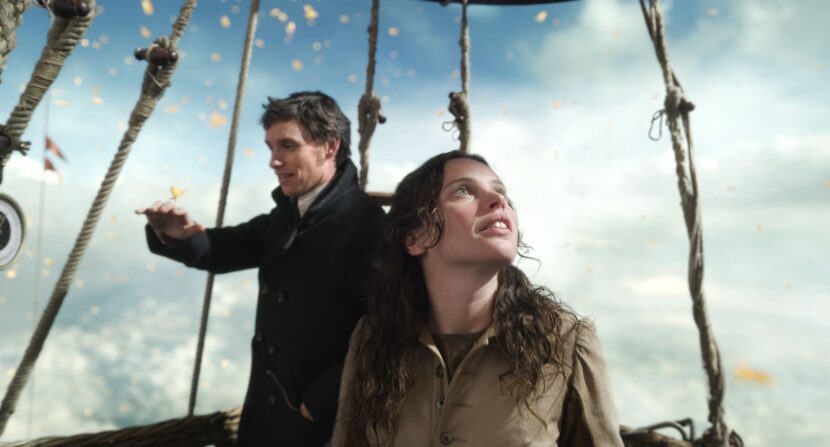
While live-action skis were an important part of the process, shortly after take-off, Amelia and James, encounter a storm – including lightning strikes, misty clouds, and heavy, pelting rain – which was filmed on a bluescreen stage, with the skies entirely created in CG. But after the rain comes the sun, and the duo is rewarded with the spectacle of several thousand migrating yellow CG butterflies. To accurately recreate this fleeting moment of beauty, the Framestore team carefully captured the delicate motion and swarming of butterflies, combining animation work with particle simulation. “It was important to get the plot and storytelling, and so we added butterflies: 700,249 butterflies!” recounts Kaestner.
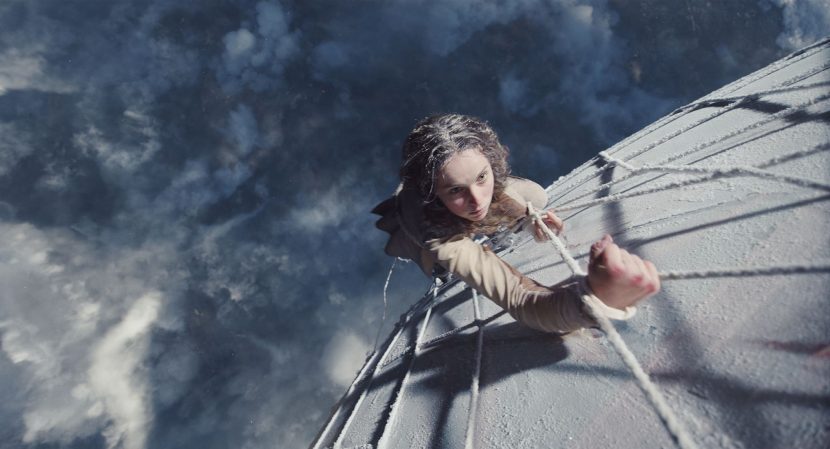
As they reach extremely high altitudes, Amelia is tasked with climbing the balloon. “It’s an inspired moment,” comments Magana, “but it also put the pressure on us as artists – we felt very much alone there, left with nothing to hang on to but Felicity’s performance and our pixels.” The shots were very complex as Jones was filmed on a practical soft surface that responded to her weight, but this needed to be seamlessly blended with the larger digital balloon’s curvature. “That was a really tricky sequence because obviously the practical ropes went long enough so we had to do rope extensions. We had to pick and choose which ropes we keep from the plate and track which to extend them or just rub them out and replace them digitally,” Kaestner recalls. Framestore ended up doing active body tracking of Jones, “just to make sure everything aligns up and was the right size.”
The actor’s performances in freezing weather conditions also required some post-production tricks, as Compositing Supervisor Luigi Santoro explains. “Condensing breath was a challenge that was solved by filming voice actors reading lines in a freezer truck,” he says. “We then used facial tracking to place the breath elements at the right scale, perfectly matching Eddie and Felicity’s amazing performances.” There was also minor digital makeup on the actors’ faces and their hands, as the frostbite takes its toll on Amelia’s hands.
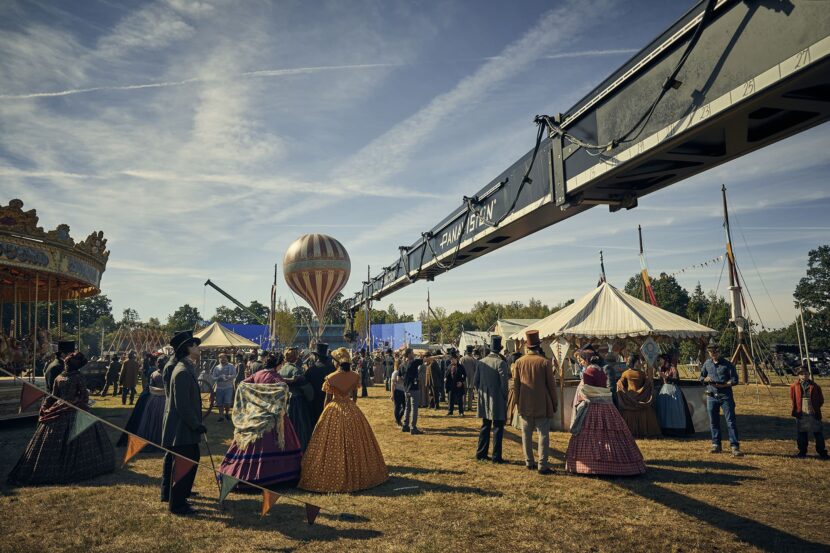
The film’s establishing shot features a CG set and full crowd extension admiring the pre-take-off spectacle. Once the balloon lifts off the ground, the couple looks down onto 1862 London for some 1000 frames – a lingering sequence that required historical accuracy and extensive research. “It was one of the most challenging shots we faced,” explains Plewes. “If something didn’t look quite right, the audience would have had time to pick up on it. It’s a sequence that sets the tone for immersing the audience into the story.”
The project was rendered almost entirely in Framestore’s new render Freak. “It was especially good for the cloud stuff, as it gave us a lot of freedom to work with the shader writers. We looked at the latest R&D papers on clouds and because obviously we had to render so much material, we really needed render optimizations or the render times could have been horrendous,” explains Kaestner. Framestore had primarily been using Arnold, but they have moved to a new renderer as it gives them full code access and flexibility to fine-tune solutions at the high end to get ‘the last 3%’, “which for a company like Framestore is critical.” This flexibility is both technical in terms of optimizations and also creative in terms of refined precise look-dev, such as light scattering. He adds, “Freak gave us enough control to work with different sorts of settings and we had very good control of how the light scattered within the clouds.” In the end, Framestore delivered 501 shots for Aeronauts – 497 with CGI

